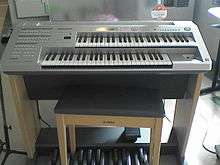Modesty panel

A modesty panel is a thin board of wood or metal that is attached to the front of a desk, drafting table, electronic organ, or similar item. It is intended to shield legs, ankles, or feet from view in a variety of circumstances. The panel provides privacy for the person seated at the desk or organ, as it covers the upper part of the legs. This privacy role is particularly useful in cases where the desk or organ is positioned in front of a class or hall. The modesty panel provides structural support for the four legs of the desk or organ, and it may also be used as a place for affixing electric cabling, computer cabling, or electrical extension boxes.
Early modesty boards were often used in Quaker meeting houses and other churches of the eighteenth and nineteenth centuries, growing in popularity during the Victorian era. Modesty boards might be found running up the sides of stairways to discourage passers-by from looking up females’ dresses. They were also added to the sides of church organs, which served to shield the musician’s feet and legs from the congregation’s view as she played the organ’s pedals. Later, as women began to enter the secretarial force in large numbers during the twentieth century, modesty boards were added to office desks.
Some designs for women's bathing suits also include a modesty panel in front, covering the crotch area.
| Look up modesty panel in Wiktionary, the free dictionary. |